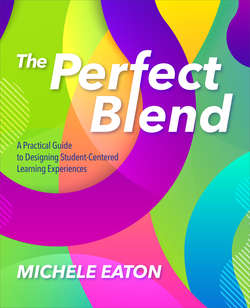Читать книгу The Perfect Blend - Michele Eaton - Страница 36
На сайте Литреса книга снята с продажи.
Choice in Assessment
ОглавлениеImagine a student goes through that lesson and struggles on the assessment. For the purposes of this example, let’s say the student selected the text-based resource and the interactive slides as the content for the lesson. One of the benefits of blended learning is how it can make differentiation and remediation more efficient. If you wanted to help this student and provide another opportunity to demonstrate mastery, another text-based resource would not make sense. If the student read the text and was not successful on the assessment, offering more of the same would not be the most reliable method to reteach. If, instead, you had built varied reteaching materials into the lesson already, you could direct the student to watch the video content they did not choose at the beginning of the lesson. This provides additional materials to help the student review the content without creating extra work for you. Plus, those reteaching materials are in a different medium than what the student initially accessed.
This leads to creating options for assessments. Certainly, we can give students options in the tools they use for different assessments. If we give an option for what the assessment looks like, that also creates a built-in option for remediation. If a student is given a chance to retake an assessment, relying on the exact same quiz or assessment is not the most accurate way to determine if the student has reached proficiency. Has the student reached mastery or merely remembered or reviewed the answers from the first time they took the assessment? However, if you previously had given students the choice of multiple assessment types, you can give a student a second, different assessment after getting some extra instruction without any additional planning effort on your part.
